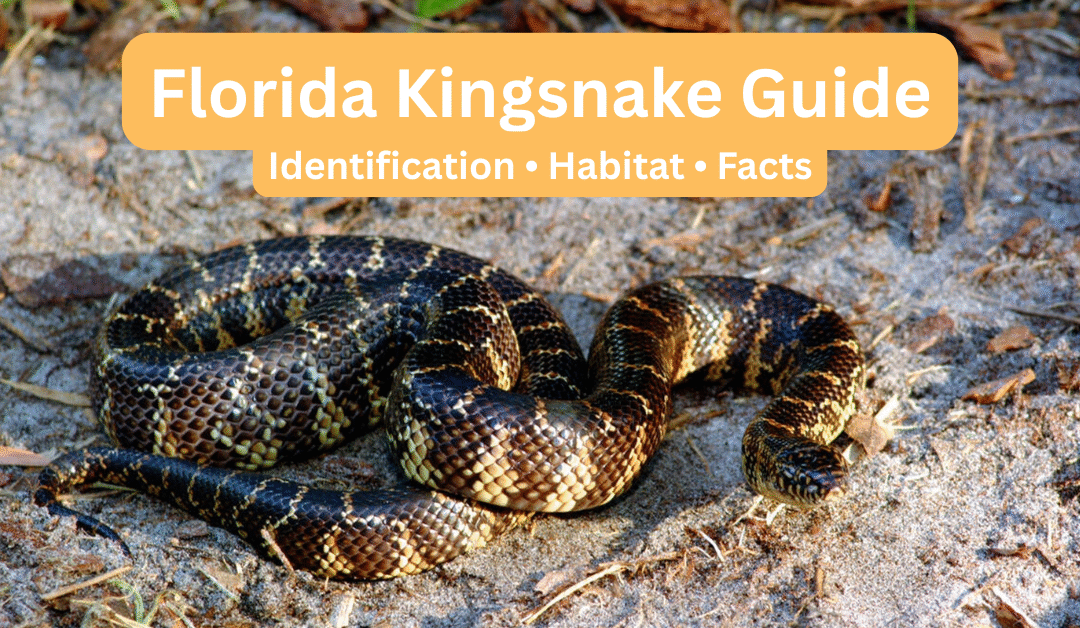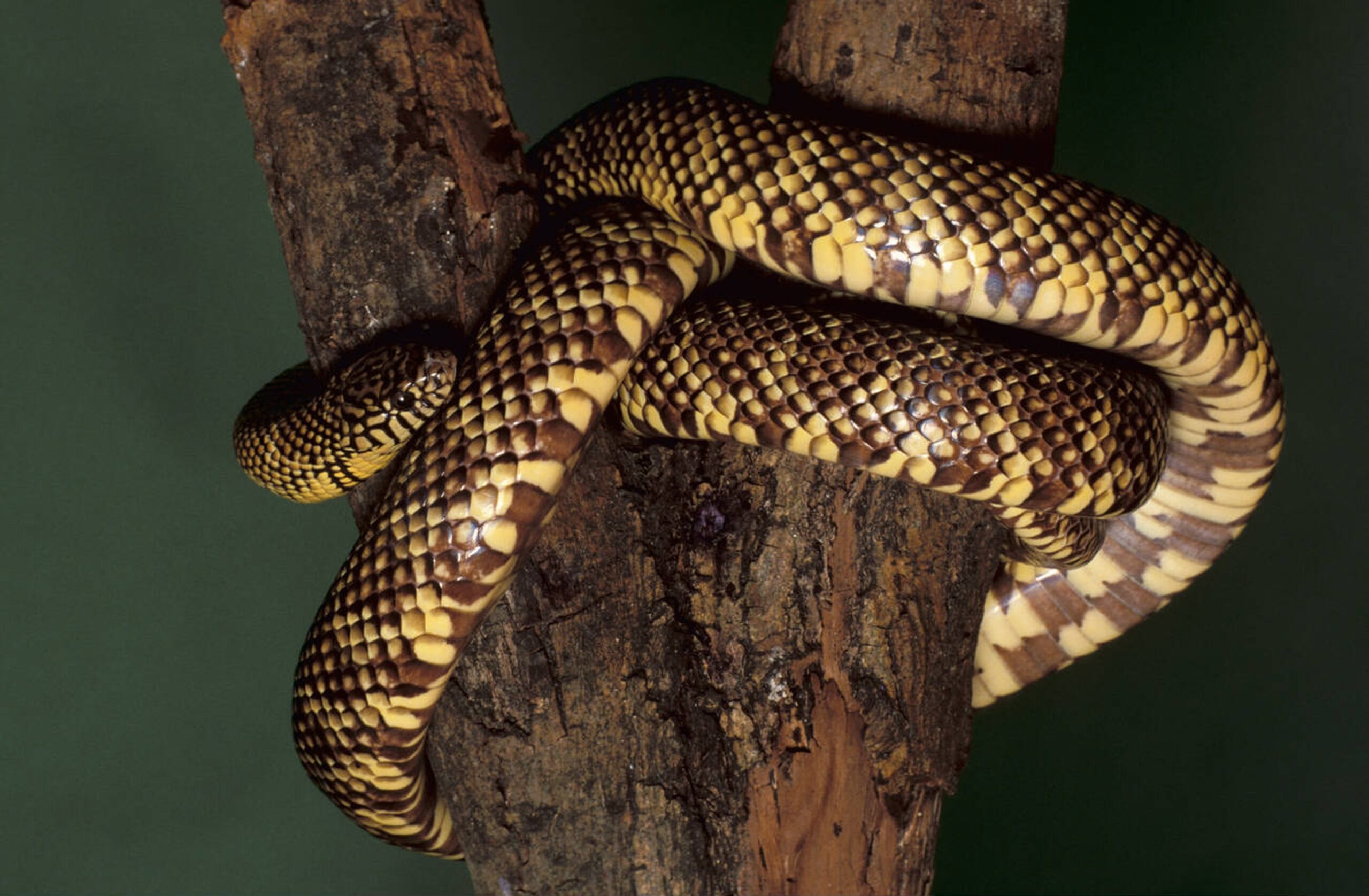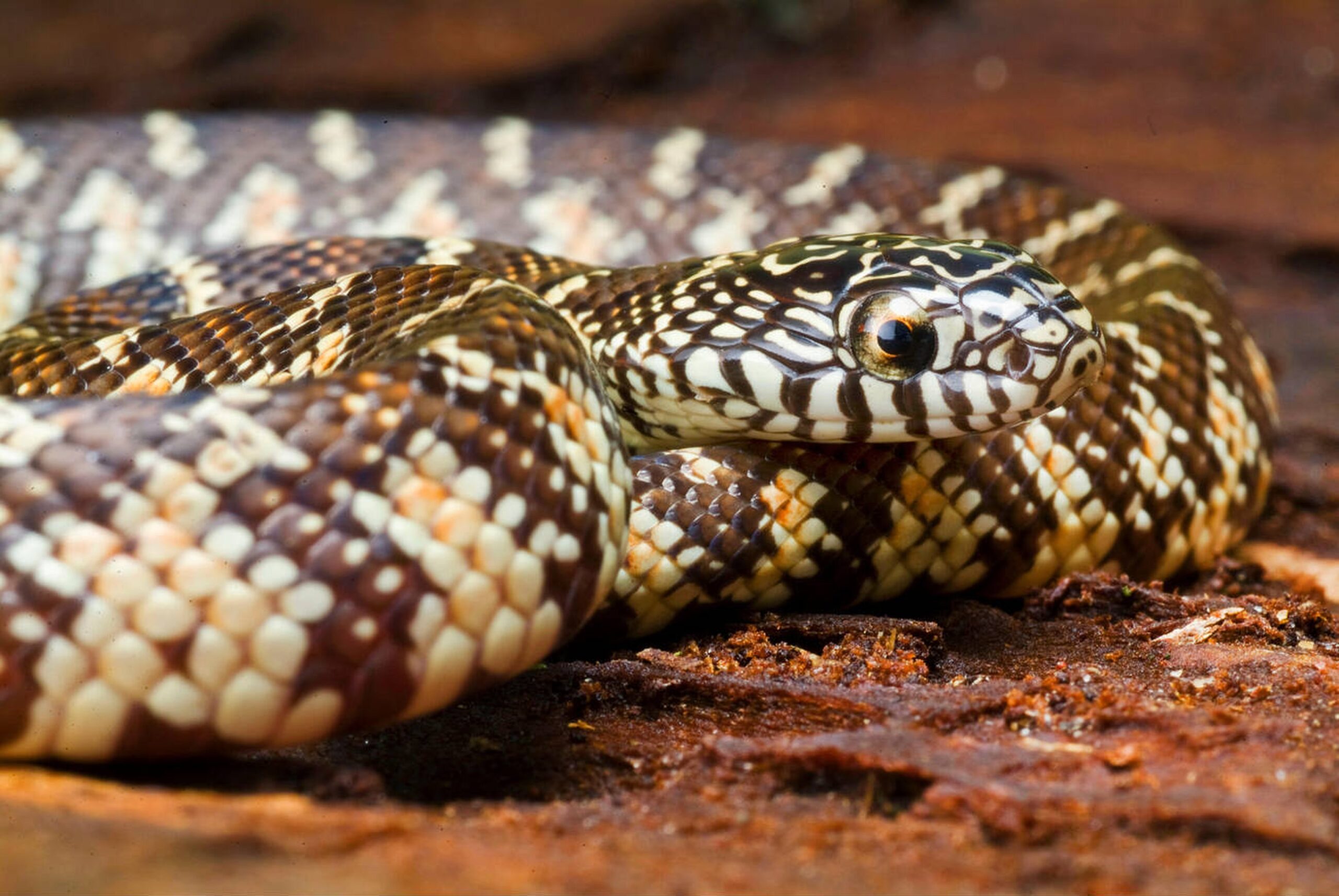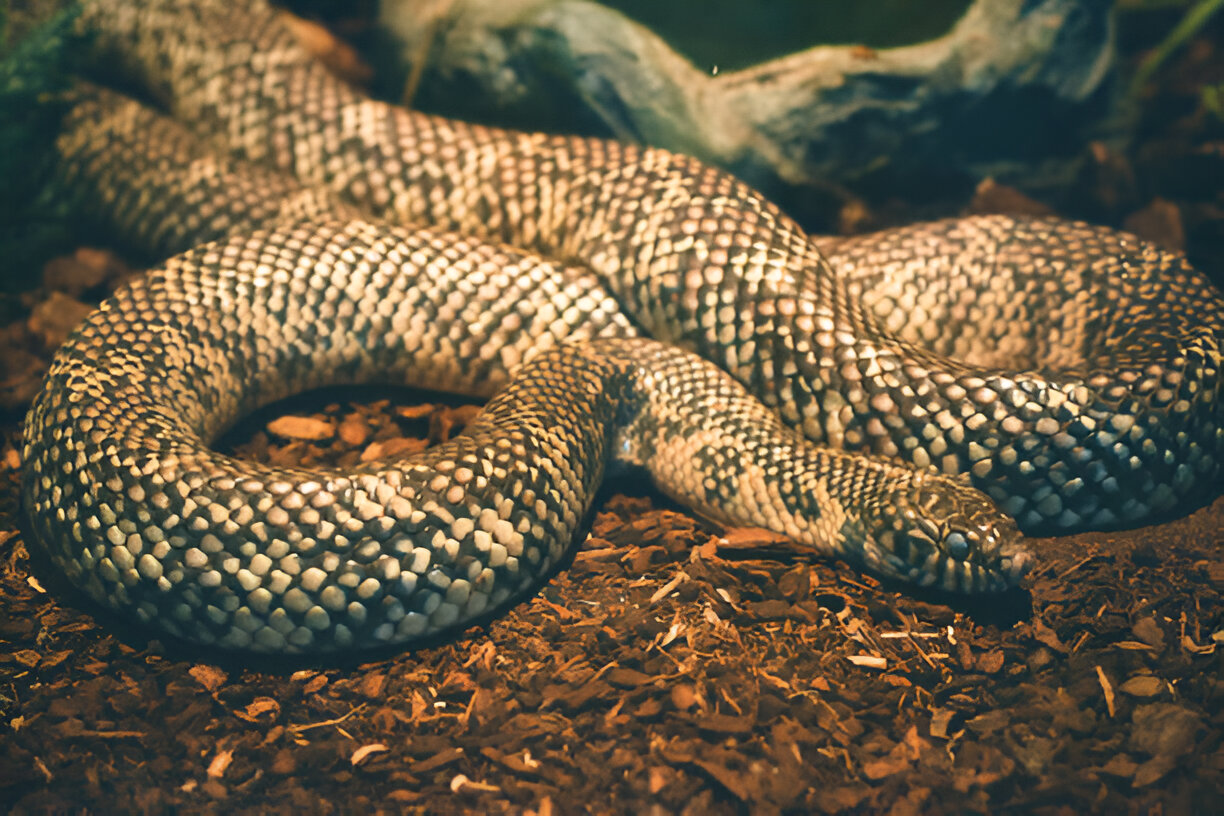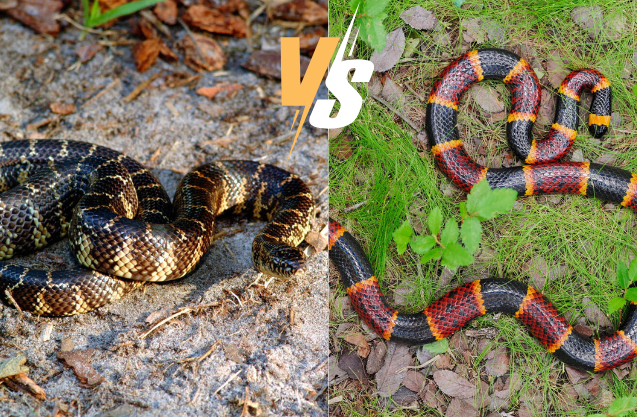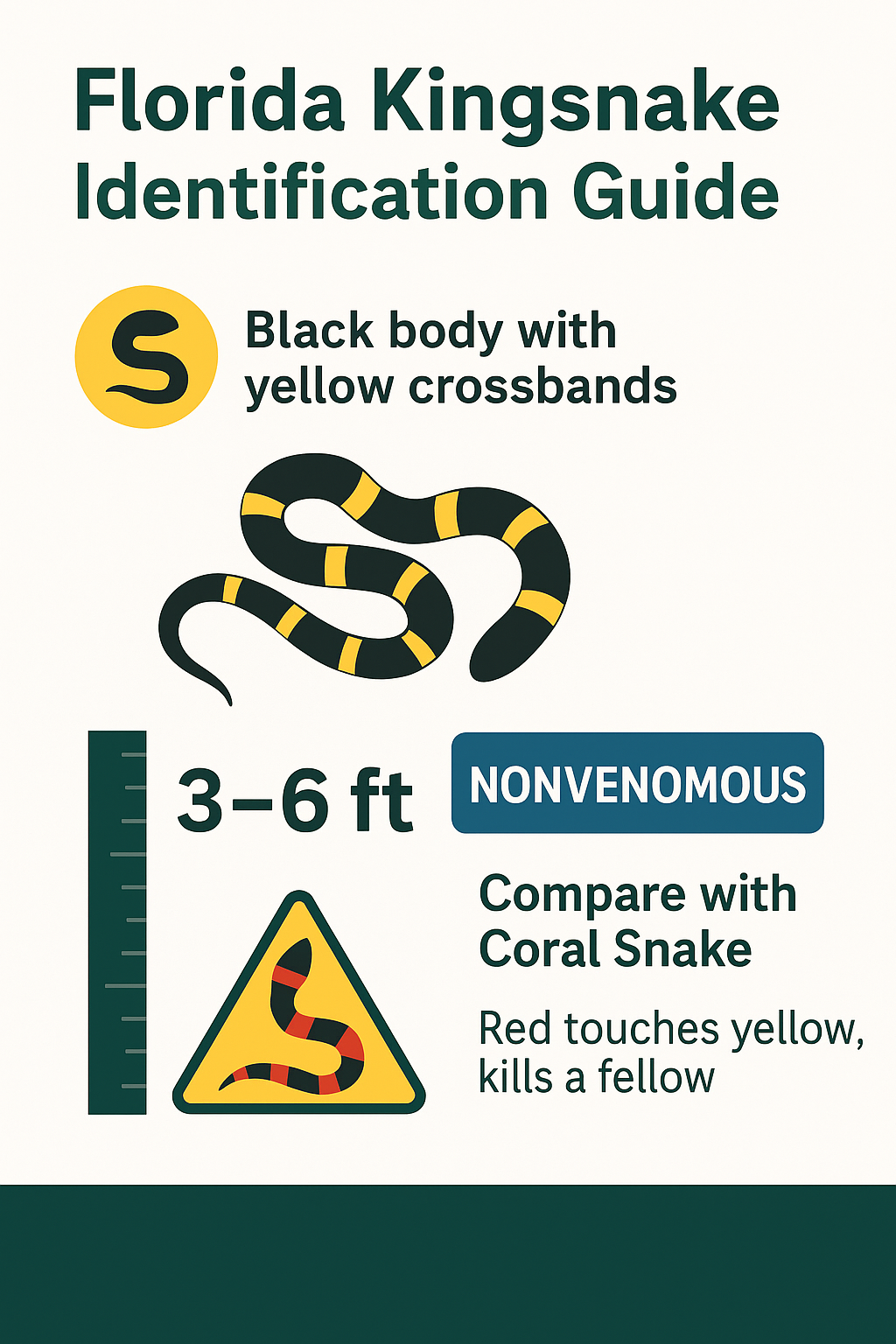Introduction
The Florida Kingsnake (Lampropeltis getula floridana) is one of the most fascinating nonvenomous snakes native to the Sunshine State. Known for its striking banded pattern and its incredible ability to prey on venomous snakes, this reptile plays a vital role in Florida’s ecosystems. Whether you’re a hiker, a homeowner, or a wildlife enthusiast, learning about the Florida Kingsnake helps you better appreciate and safely coexist with this remarkable species.
Identification – What Does a Florida Kingsnake Look Like?
Florida Kingsnakes are medium-to-large snakes that typically grow 3 to 6 feet in length, with some exceeding 7 feet. They are easily recognized by their glossy black or brown background color with bold yellow or whitish crossbands. These bands may form broken chains or full rings around the body, depending on the individual.
Key Features:
-
Size: 36–72 inches on average
-
Color: Black or dark brown with yellowish crossbands
-
Scales: Smooth and shiny
-
Head: Slightly wider than the neck
⚠️ Look-Alike Species: The Florida Kingsnake is sometimes confused with the venomous coral snake. A simple rhyme helps: “Red touches black, friend of Jack. Red touches yellow, kills a fellow.” Kingsnakes never have the red-yellow banding sequence that coral snakes do.
Habitat and Range
As their name suggests, Florida Kingsnakes are endemic to Florida, ranging across most of the peninsula. They thrive in a variety of habitats, including:
-
Pine forests
-
Cypress swamps and wetlands
-
Agricultural fields
-
Suburban backyards
These adaptable snakes are strong climbers and swimmers, which allows them to exploit diverse habitats and even thrive near human activity.
“Like other Florida snakes, such as those covered in our Maryland Snakes Guide, kingsnakes thrive in diverse habitats.”
Behavior and Diet
Florida Kingsnakes are primarily diurnal, though they may also be active at night during hot summer months. They are powerful constrictors, killing prey by coiling around and suffocating it.
Diet Includes:
-
Rodents (rats and mice)
-
Lizards and frogs
-
Birds and bird eggs
-
Other snakes, including venomous species like rattlesnakes and copperheads
👉 Did you know? Florida Kingsnakes are naturally immune to venom, which allows them to prey on dangerous snakes without harm.
Florida Kingsnake vs. Venomous Snakes
One of the kingsnake’s most impressive traits is its ability to eat venomous snakes. This makes them incredibly beneficial to Florida’s ecosystem — and to humans.
-
Nonvenomous: Safe around humans
-
Mimicry: Sometimes mistaken for coral snakes due to banding patterns
-
Ecosystem Role: Natural population control for rodents and venomous snakes
“If you want to compare venomous snakes across states, see our detailed post on Rattlesnakes of Arizona.”
Florida Kingsnake Identification Guide (Infographic)
To make identification easier, here’s a simple visual guide. The Florida Kingsnake can be recognized by its bold yellow crossbands on a dark body, its average size of 3–6 feet, and its status as a completely nonvenomous snake. The infographic below also highlights how to tell it apart from the venomous Coral Snake.
Reproduction and Lifespan
Florida Kingsnakes breed in spring, with females laying 6–20 eggs in rotting logs, leaf litter, or burrows. The eggs hatch in about 60–70 days, producing small but fully independent hatchlings.
-
Lifespan in the wild: ~15 years
-
Lifespan in captivity: Up to 20 years with proper care
Florida Kingsnake as Pets
Kingsnakes are among the most popular pet snakes because they are hardy, generally docile, and beautiful. The Florida Kingsnake, in particular, is favored for its manageable size and adaptability.
Basic Care Summary:
-
Enclosure: Secure tank with hides and climbing branches
-
Temperature: Warm side 85–88°F, cool side 75–78°F
-
Diet: Frozen-thawed rodents are standard
-
Temperament: Typically calm but may musk or rattle tail if stressed
⚠️ If you’re considering a pet kingsnake, make sure to source from reputable breeders and not from wild populations.
When you talk about care, link to Bio Dude’s care sheet
Conservation and Threats
While not currently endangered, Florida Kingsnakes face pressures from:
-
Habitat loss due to development
-
Road mortality
-
Persecution from humans who mistake them for venomous snakes
Interestingly, they have also been observed preying on invasive species like the Burmese python, showcasing their ecological importance in controlling non-native species.
Florida Kingsnake FAQs
Is the Florida Kingsnake venomous?
No. Florida Kingsnakes are completely nonvenomous and pose no threat to humans.
Are Florida Kingsnakes aggressive?
Not typically. They may rattle their tail, release musk, or bite if threatened, but they are not naturally aggressive.
Do Florida Kingsnakes like water?
Yes. They are excellent swimmers and often found near wetlands, swamps, and rivers.
Are Florida Kingsnakes good pets?
Yes, they are hardy, attractive, and relatively easy to care for, making them a popular choice among reptile enthusiasts.
The Florida Kingsnake is a shining example of Florida’s rich biodiversity — a nonvenomous predator that helps maintain balance by controlling rodents and even venomous snakes. Whether encountered in the wild or kept as a pet, this snake deserves respect and protection. By learning how to identify and understand the Florida Kingsnake, we can coexist with one of Florida’s most remarkable reptiles.
“Explore more in our Complete Snake Guides

